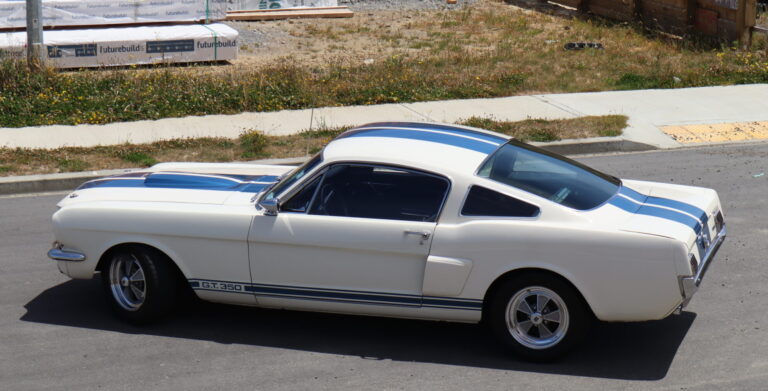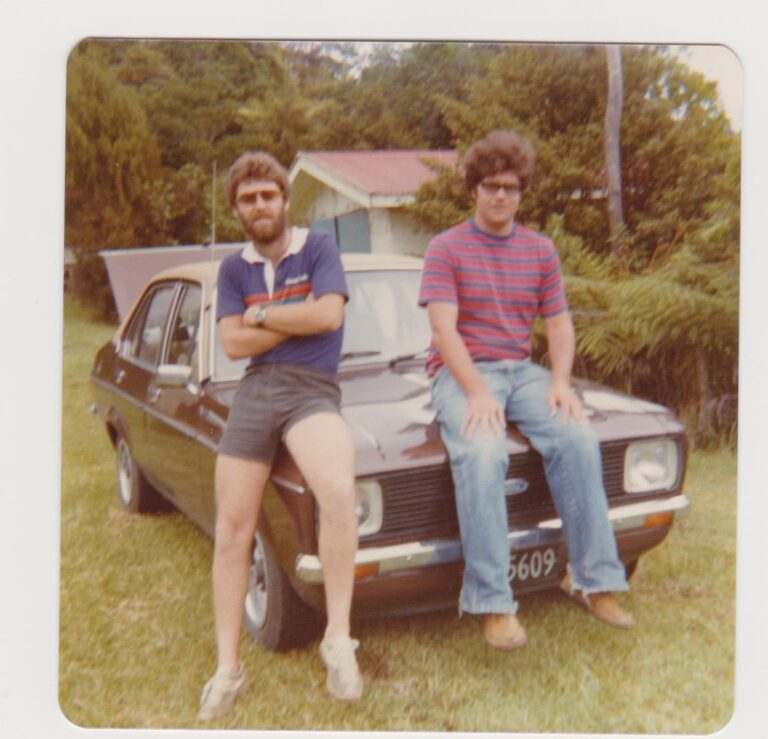Car fans of all shapes and sizes tend to get giddy and romantic any time anyone brings up the topic of ‘first cars’ — and that makes sense. For many, their first car symbolizes the key to their independence. The simple ability to wake up in the morning with the knowledge that you can travel anywhere and do anything is a very powerful thought — unless you’re surviving on $5 fills at the local petrol station, in which case, don’t give up mate, we’re all rooting for you.

I remember my first car fondly, although that’s mostly because I only bought it 18 months ago, and if I crane my neck I can see it from my work desk as we speak. I had lusted after a Suzuki Swift Sport for quite some time, much to the confusion and concern of my friends and family. And while my purchasing process effectively boiled down to no more than a few emails to an agent in Japan named Rizvi, it didn’t make the confirmation that I had gone from a slave to public transport to a car owner any less sweet.
So when a friend — let’s call him Simon, since that is his name — reached out to me a few months ago to help him find his first car, I leaped at the chance, immediately crashing his Facebook account with an ocean of links to cars advertised online. But, like most teenage boys, Simon was after one thing and one thing only: a Honda.
However, while his desire for all things VTEC was strong — to my surprise at least — clean, older-generation Hondas weren’t easy to locate, particularly in his preferred manual format. This forced us to temporarily step back from the beloved marque, and check out the alternatives. With a $5000 budget, there are plenty of reasonable, reliable commuter cars a shopper can buy. But Simon was after something with pedigree, something that could make a neat noise, corner nicely, and maybe even turn the occasional head. Something fun.

One of the first names to be thrown in the ring was the Nissan Pulsar VZ-R. The Motorhood actually road-tested a mint example of one of these earlier in 2015, concluding that the Nissan, with its ability for its 1600cc engine to rev over 8000rpm, and its capable handling characteristics in stock form, was a competent car for anyone on the hunt for performance on a budget. However, it lacked the aftermarket support of some of its rivals, and as Simon and I found out, the cars themselves weren’t too common either.

A favourite of mine that I managed to find in good condition was a Daihatsu Charade DeTomaso (in red, of course). They’re fitted with Recaro seats, a Nardi steering wheel, sticky Pirelli tyres, and a racing-derived camshaft all standard. Add all of that to the cheerful rev-happy little 16-valve 1.6-litre engine under the bonnet, and it would be quite a nice sleeper if it didn’t have ‘DeTomaso’ splashed proudly down the sides in big letters. I always had a soft spot for these things, having grown up watching them duke it out in the Australian Rally Championship (ARC), in the often capable hands of Rick Bates. However, concerns over a reputation for rust, as well as its inability to push Simon’s buttons, resulted in us moving on.

Then, we found it. Or rather, we thought we had. An exceptionally mint-looking 1997 Honda Civic EK VTI-R. Finished in white, with a clean-looking body and interior, relatively low kilometres on its clock, local, and $1000 under budget, this was Simon’s Eleanor. The EK is lauded worldwide for its aftermarket support, and its modification potential. This is particularly true on our shores, as New Zealand has a proud and tight-knit Honda community — a group Simon was already firm friends with. It was perfect — but, sadly, too perfect, as it had sold within the first hour it was online. As you can imagine, Simon became inconsolable, a puddle of a man who had lost his will and his way.
The slog wore on for several months, to the point where the scope was widened to include the occasional commuter car. Ford’s Focus, Holden’s Barina, and Toyota’s dowdy Echo all got their 15 seconds of consideration. Those were dark days.
Then, one evening, another break through. Could this be it?

It’s funny how often the ultimate resolution of a long, hard journey comes together in a whirlwind. Within 24 hours of seeing it advertised, it was Simon’s — a 1999 Honda Integra DC4 manual, complete with facelift, finished in what the manufacturer describes as ‘New Vogue Silver’ (please stick to making cars, Honda).
This was the last of the bug-eyed Integras before the brand introduced the bigger, heavier Integra DC5 in 2001. The DC5 would be the fourth and final hurrah in Honda’s Integra line-up, dropped from production in 2006.

While it wasn’t quite Simon’s perfect unicorn, it wasn’t far off. Sporting Honda’s 1.8-litre B18B non-VTEC unit under the bonnet, foot down, it actually went pretty hard, for what it was. Simon learned that the car had enjoyed having just the one owner for the past 13 years of its life, and that the owner had done their level best to look after it.

This was particularly noticeable when we clambered into its low-slung body. Take a look at the interior — no marks, no faded plastic, no dirt. It even came with its original factory Honda cassette player.

We also noticed the care that the previous owner had expended on the Integra when we were in motion. No rattles or shakes, and the engine was very smooth, especially considering its age. If the car had an area of weakness, it would be the condition of the body. The front bumper had several cracks in its paint, and the clear coat looked to be peeling off in certain areas. But, if the exercise had taught us anything, it was to expect compromise.

So, what now for the Integra? Simon’s looking at a few subtle modifications, new mags, as well as a potential respray. Who knows, the kid might get bitten by the modifying bug and go all out on it. That’s the beauty of it — it’s his car, he can do whatever he pleases with it. Good luck!


